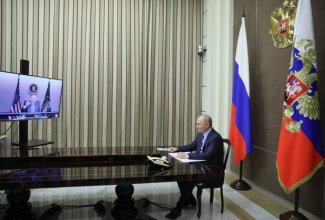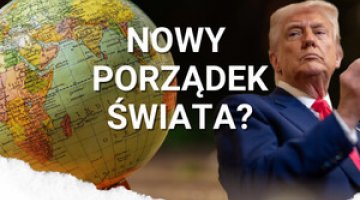The Biden-Putin video conference: dialogue, but no breakthrough

On December 7, a virtual US-Russian summit took place via a protected videolink, in which Presidents Joe Biden and Vladimir Putin conversed directly for about two hours. The US president was accompanied by Secretary of State Antony Blinken and Director for Russia at the National Security Council Eric Green, among others. After the meeting each side issued separate statements, while national security adviser Jake Sullivan held a press conference, followed by comments from White House spokeswoman Jen Psaki. The presidential adviser on international affairs Yuri Ushakov commented on the summit from the Russian perspective.
According to the communiqués and statements, the main topic of discussion was the escalation of tensions in the Russian-Ukrainian conflict. According to the Americans, Biden conveyed US concerns about Russian troop movements in the vicinity of Ukraine’s borders to Putin. Declaring support for Ukraine’s territorial integrity, he called on the Russian president to de-escalate and return to the path of diplomacy. At the same time, he threatened the Russian Federation with a severe response, coordinated with the US’s allies, in the event of any further armed aggression by Russia against Ukraine. These would include economic sanctions, additional security support for Kyiv, and an increased US presence in the countries of NATO’s eastern flank (Sullivan mentioned the Baltic States, Romania and Poland in this context). Sullivan insisted that Biden did not offer any concessions or make any promises to Putin regarding his list of demands, which included a new agreement on European security. Instead, he declared his readiness to discuss problems and mechanisms in this area. He also expressed support for continued dialogue on the Donbas, including in the Normandy format, and for the implementation of the Minsk agreements, stressing his ongoing contacts with the Ukrainian side on this issue. With regard to Nord Stream 2, Sullivan said that intensive consultations were being held with the outgoing and incoming German governments. At the same time, he stressed that the fact that the gas pipeline is not yet operational is a lever which the West could use to put pressure on Russia in the context of the threat of an attack on Ukraine. In turn, Psaki announced that the Biden administration – in contrast to some US congressmen – believes that further sanctions against NS2 would not have a deterrent effect on the Kremlin’s aggressive policy.
According to the Russian side, Putin expressed the will to continue bilateral talks in the positive spirit created after the Geneva summit, reiterated the accusations against Ukraine over the failure of the authorities in Kyiv to implement the political conditions of the Minsk agreements on resolving the conflict in the Donbas, and again accused NATO of “installing itself in Ukraine” and increasing its military presence on the borders of the Russian Federation, thus approaching Moscow’s ‘red lines’. Putin reiterated his demand for legally binding security guarantees to be given Russia; in particular, these include not expanding NATO further eastwards, and not deploying offensive weapons systems near Russian territory. According to Ushakov, Biden agreed that these “sensitive issues” should be the subject of further talks. According to his account, Putin downplayed the threats of Western sanctions; he said Russia had got used to them. Nor did he promise to withdraw troops from the vicinity of the Ukrainian border. Allegedly, he also stressed that there is an asymmetry of interests between Washington and Moscow with regard to Ukraine caused by their different geopolitical perspectives (for the Russian Federation it is a question of the security of its borders, and for the United States it is a distant region). The Russian side also noted that Biden had referred to the historical alliance between the US and the USSR in World War II, and that the conversation – despite the two sides’ different positions – was substantive and conducted in a friendly tone.
The Presidents instructed their respective governments to continue contacts and dialogue on the above-mentioned issues, as well as the other matters raised during the discussions, including cyber-security and strategic stability (in the nuclear and conventional spheres, including space). Iran’s nuclear programme was also discussed. Both sides emphasised the constructive course of discussions on this issue; however, Putin noted that the agreement with Iran (JCPOA) should be fully restored to its original form, which is closer to Tehran’s position. The presidents also talked about attempts to normalise the work of their diplomatic missions, whose numbers and scope of operation has been subject to reductions and restrictions due to mutual sanctions. The Russian president suggested the adoption of the ‘zero option’, i.e. the mutual abolition of all restrictions, while the Americans are demanding the introduction of symmetry (so far non-existent) for the operation of both countries’ diplomatic missions.
After the meeting, Biden contacted the leaders of Britain, Germany, France and Italy by phone and briefed them on the summit. His telephone conversation with Ukrainian President Volodymyr Zelenskiy has been scheduled for 9 December.
Commentary
- Preliminary information suggests that the relatively brief virtual summit between Biden and Putin focused on presentations of both sides’ familiar, strongly conflicting positions on Ukraine. The parties’ accounts of the conversation are different, reflecting their attempts to use it for PR purposes.
- The meeting itself, as well as the announcement of further diplomatic contacts and dialogue on the issues raised by the two leaders, should be regarded as a limited success for Moscow, which can treat the summit as an initial phase of the negotiation process regarding its demands on Ukraine and European security. It has also brought some benefits to the American side, which has demonstrated the US’s principled stance, while so far not displaying any inclination to make concessions under Russian pressure. It will only be possible to assess the preliminary balance of the parties’ benefits and the impact of the meeting on the situation once the results of the further diplomatic talks and other moves which were announced become known.
- The US’s emphasis on close consultations with its European allies is intended, on the one hand, to show the West’s solidarity and coordinated stance towards the Russian Federation’s aggressive actions; on the other hand, however, it may suggest that any sanctions will be of a limited nature due to the reluctance of some major Western Europe’s states to exacerbate the conflict with Moscow over Ukraine. The Biden administration’s statements concerning NS2 indicate that talks are underway with Germany on using the delay in launching the pipeline to put pressure on Russia (they suggest freezing it in the event of large-scale Russian aggression, as Deputy Secretary of State Victoria Nuland confirmed during a Congressional hearing on the same day). At the same time, the administration is reluctant to impose new sanctions on the project, as evidenced by the information that Congress has (under pressure from the administration, among other things) refrained from introducing new mandatory restrictions on it as part of the National Defense Authorization Act (to ratify the US defence budget), which is currently being debated.
- The United States declared its strong support for the implementation of the Minsk agreements and for diplomatic attempts to resolve the conflict, including within the framework of the Normandy format, and also announced intensive consultations with Ukraine on this issue. This may suggest that the Americans intend to exert some pressure on Kyiv to make some concessions to the Russians’ demands.
- It is unlikely that either side will change its policy course in the near future. Washington’s intention here is to use the dialogue to prevent the escalation of the Russian-Ukrainian conflict. Moscow is fully aware of this, and will try to maintain tension in order to force through some more tangible concessions. Accordingly, among other measures, it will probably continue its troop movements near Ukraine and thus put pressure on Kyiv, Washington and European capitals. In turn, the US will continue to consult with its allies and the Ukrainian government about a possible response involving sanctions against Russia in the event of any further armed aggression against its neighbour. It is possible that if no progress is made in the direction Moscow expects, including the implementation of the Minsk agreements, it will provoke a local limited escalation of the military conflict in the Donbas in order to raise the pressure to accommodate its demands. However, it is unlikely that Moscow will opt for a large-scale invasion of Ukraine.





